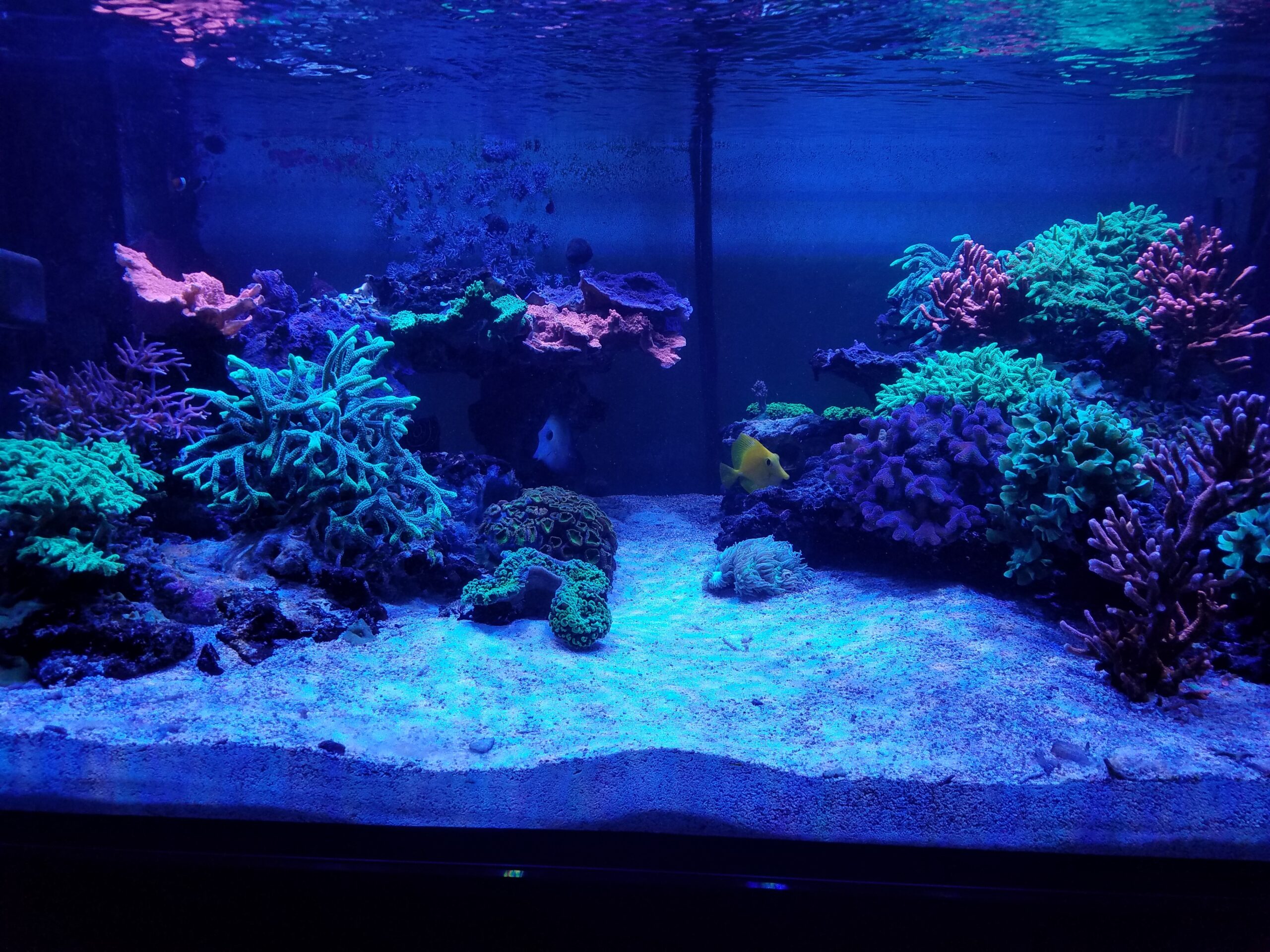As with many aspects of reefkeeping, there is no perfect way. Even something as seemingly simple as whether to choose substrate or go bare bottom leads to a discussion. As someone who has run both types of systems and is currently running tanks both with and without substrate, I have come to realize even with this there is no perfect system as there are pros and cons regardless of which method is chosen. The decision whether to keep a bare-bottomed tank or one with substrate is not an easy decision and after also seeing many tanks both ways it is apparent that everyone has a difference of opinion as to what is best.
In the very early days of the hobby it would be unthinkable to have a tank without substrate as undergravel filters were the original means for biological filtration. However, as the hobby has evolved so too has how we achieve biological filtration as well as how what we need versus what we want in our tanks. While I am not going to open the can of worms of the deep sand bed or which substrate to use, these are also topics for debate.

Initially to me at least, one of the aspects of why I consider many European tanks to be more aesthetically pleasing than many American tanks is that they are not only filled with large colonies versus frags, but also that most contain substrate versus many of ours are bare-bottomed. However, over time I have come to realize that there is a place for both in the hobby.
As much as I hate to admit it, while I have more bare-bottomed tanks than tanks with substrate I do think tanks having substrate does make these tanks look better. In addition to my soft coral tank containing substrate the tanks of Julian Sprung and Sanjay Joshi both appeal as do European tanks as they contain large coral colonies with substrate and are aquascaped to produce truly impressive displays. But it is not just the substrate that makes all of these tanks look so good, but it is also what the substrate does in these tanks.
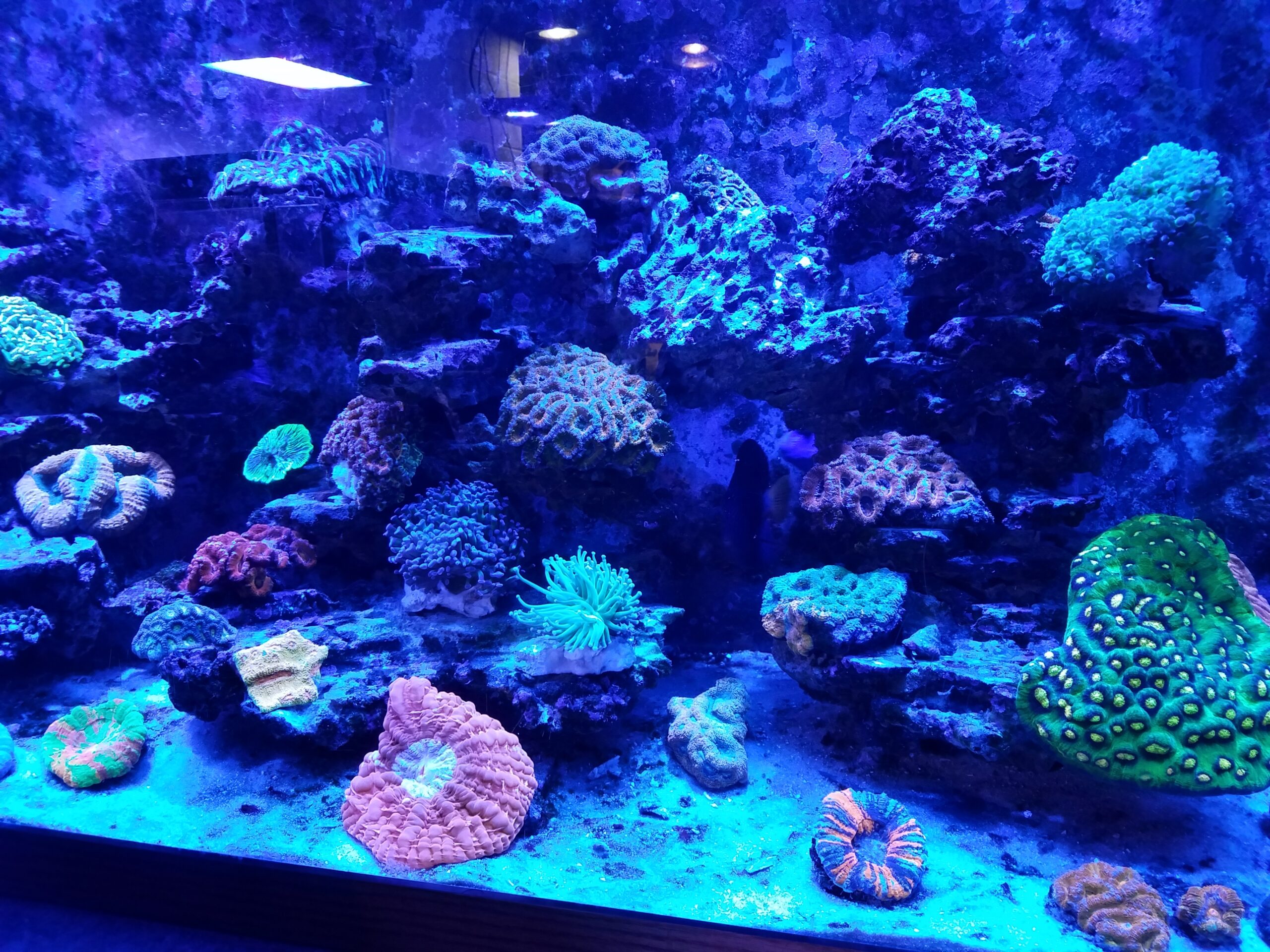
First the glitter lines moving across the substrate is more significant in these tanks than it is in a bare bottom tank. This is probably because the light substrate reflects the light far more than occurs in a bare bottom tank. This amount of reflected light may also result in some light being reflected up back under some of the colonies. As a result of this reflected light, some of these corals may not get the same amount of bleaching on their undersides as occurs in some bare-bottom tanks.
I realize that a number of factors may account for this, but it is my observation that these factors all play into why a tank with substrate, at least to me, looks better than do most tanks with bare bottoms. This is especially true if the tank is small or if it is aquascaped with minimal live rock and lots of open spaces. In these instances, I feel that using substrate is almost essential not only from an aesthetic viewpoint, but also in order to have adequate biological filtration. While we have learned that we no longer require the two pounds of live rock or four inches of substrate to produce adequate biological filtration, an adequate amount of surface area is still required.
In some of my tanks, I have tried to emulate how the European tanks look when I set them up in terms of open space, but I still used a bare bottom in most of them for their advantages. In the largest tank I have, I tried to get the best of both worlds, in that a piece of black starboard is mounted on the bottom glass instead of just bare glass. In this way the bottom glass is protected and provides a dark substrate as a contrast as opposed to white sand, gravel or plain glass.
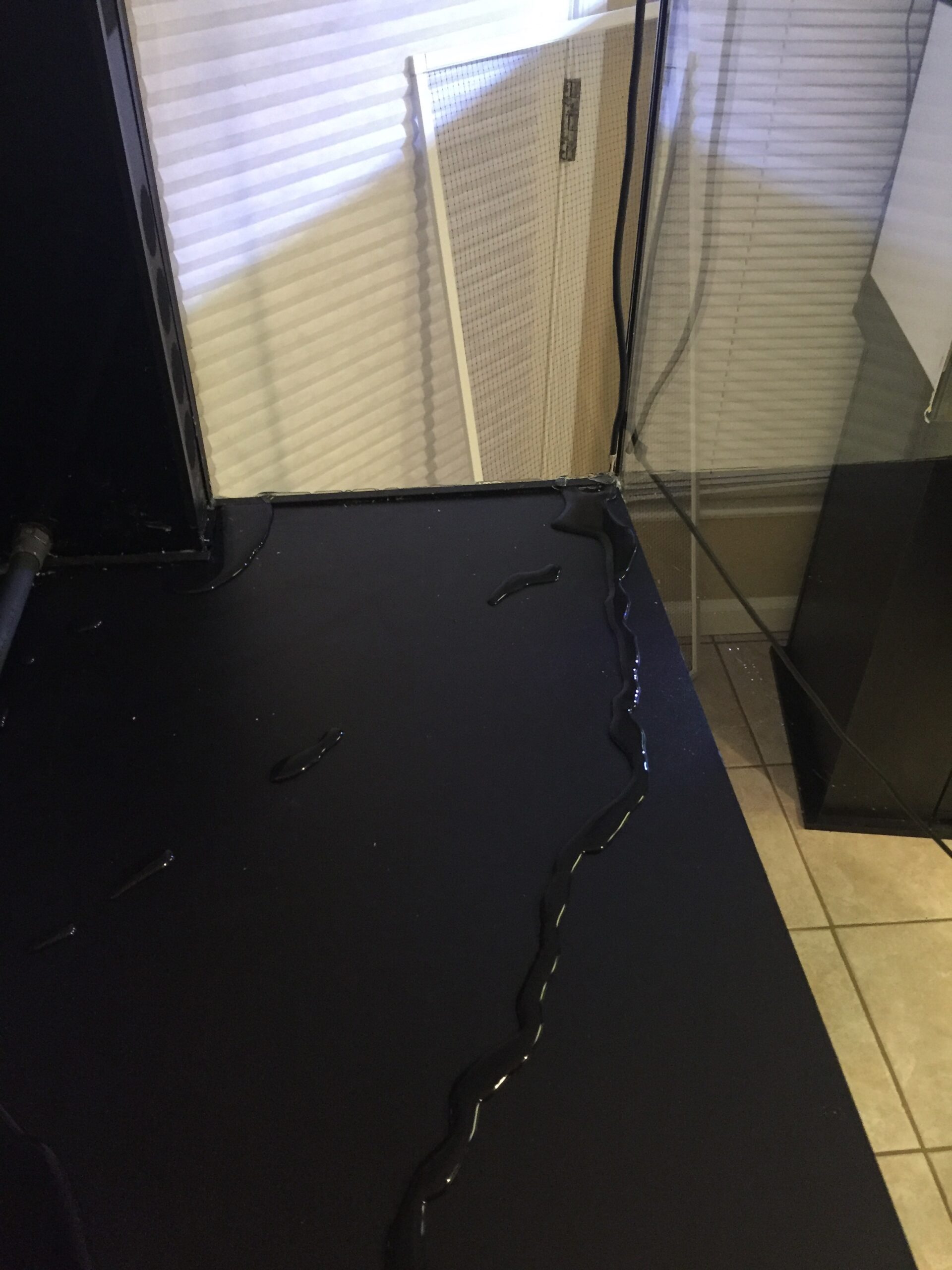
The starboard is sealed onto the bottom and sealed along the sides of the glass so that there are no spaces for detritus to accumulate. So far it has functioned like a bare bottom, but looks like there is substrate and coralline algae has grown over it even faster than it has bare glass. In an attempt to make this concept even better, substrate like sand or fine gravel can be glued to this starboard or to the bottom glass before the tank is filled, “gluing” sand or gravel to the bottom glass. By doing this, the look of substrate is achieved, but the benefits of a bare bottom are still present.
In addition to some aesthetics, there are also some other advantages to having substrate in a tank. First, having substrate dramatically increases the amount of surface area for bacteria to settle on. Theoretically, this should provide for a tank to hold a greater biological load and also be able to more effectively or efficiently convert waste into less harmful compounds. While this function may be taken up just as well with a well-functioning refugium in a bare-bottom tank, it is hard to know what the capacity of each is. In this regard more is better may indeed be the case, especially if you are like me and tend to overstock the tank with corals and especially fish.
Having substrate also allows for microfauna, like amphipods, copepods, or other small crustaceans as well as worms, and burrowing mollusks to have a home. Having a healthy sand bed full of these organisms can go a long way in helping fish such as mandarins or scooter blennies to find enough natural food to survive. In addition, a substrate is almost essential if one wishes to keep fish like burrowing wrasses, jawfish, sand-sifting gobies, or any of the small burrowing fish, alive for any length of time. Granted the type and size of substrate will need to vary depending on which of these fish you wish to keep, so this needs to be kept in mind as well.
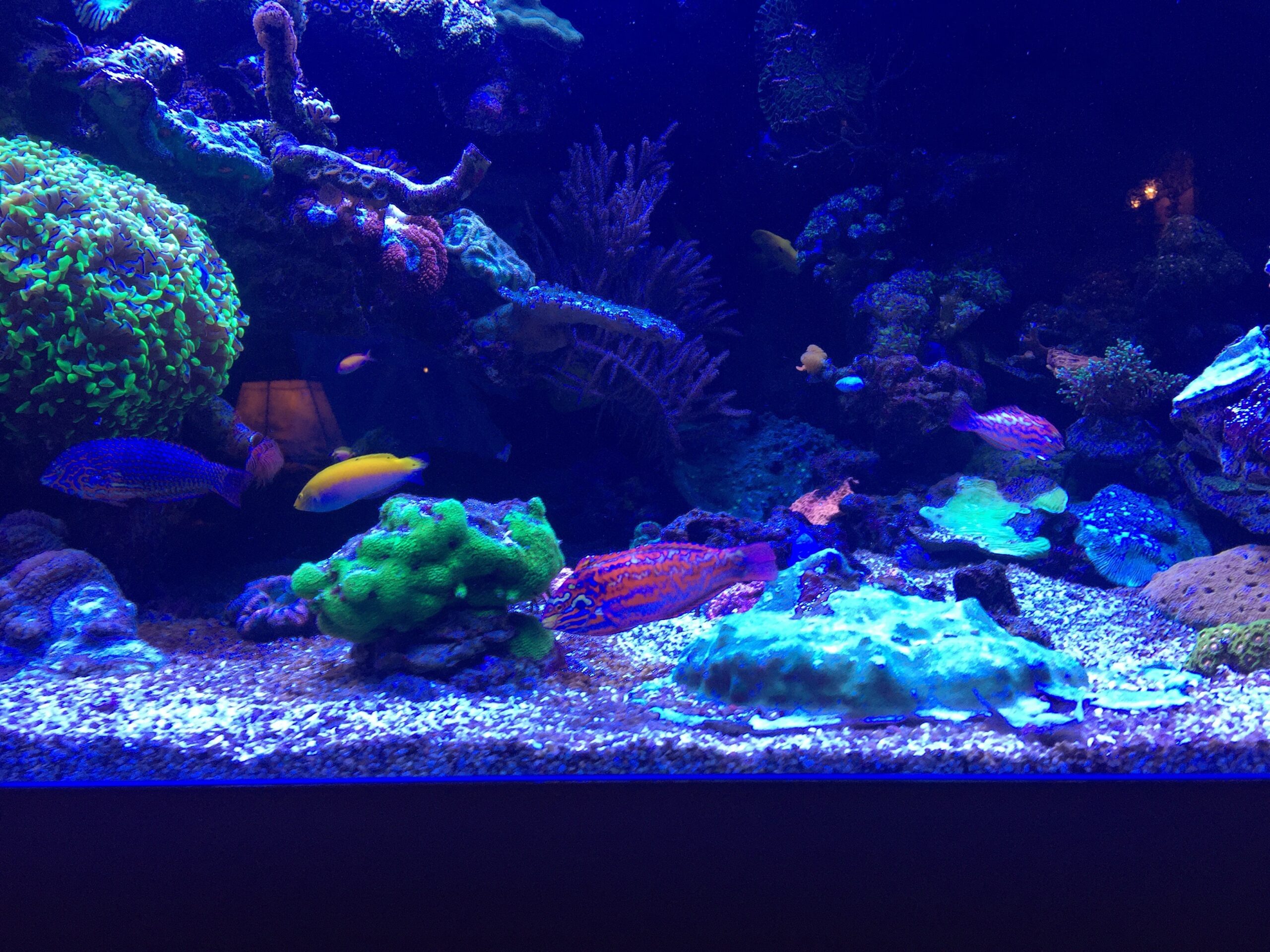
In addition to some fish needing substrate to thrive, some corals seem to do better when they rest on the substrate than they do when they move around on bare bottom. Plate corals like trachyphyllia, scolymia, and fungiids, all seem to prefer resting on substrate over the long term rather than bare glass. This may be due to their not liking to blow around seemingly randomly when no substrate is present. Substrate may also allow them to capture food more readily than is the case when it moves by them quickly as happens on glass when no substrate is present.
Another good reason to use substrate is that it is a good way to hide things like equipment or plumbing and make the tank look even more natural. The best example of this is in David Saxby’s tank, where he used substrate to hide the glass troughs that were built into the bottom of the tank, which houses the many pipes used to create the incredible flow throughout this tank.
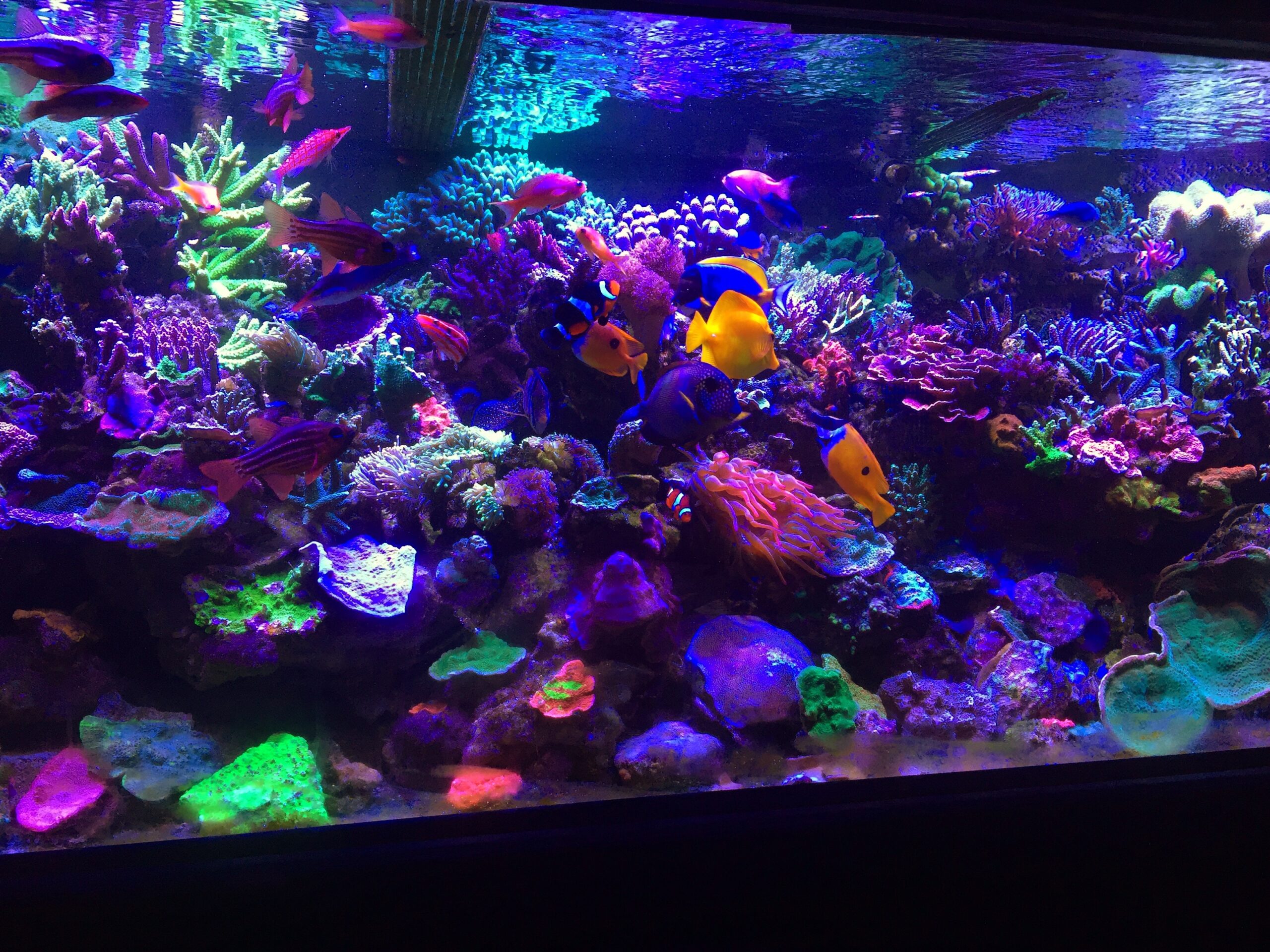
Similarly, Martin Lakin uses substrate to not only hide things, but also to try and smooth the edges of his tank so that his tank looks even larger than it would have if the sharp edges of the tank and overflow boxes had been exposed. Interestingly, in both of these large tanks, a significant amount of the rockwork is attached directly to the walls so that little sand as possible rests underneath the live rock. This helps to keep the substrate clean despite the heavy bioloads and prevents any “dead” spots from forming.
While there are positive aspects to having substrate, there are also some negative aspects as well. For those of us who keep bare-bottom tanks, the feeling is that these negative aspects outweigh the positive. The single biggest reason for keeping a bare bottom is that substrate limits the amount of flow possible in a tank as when the flow is high substrate often blows around or moves into unsightly piles.
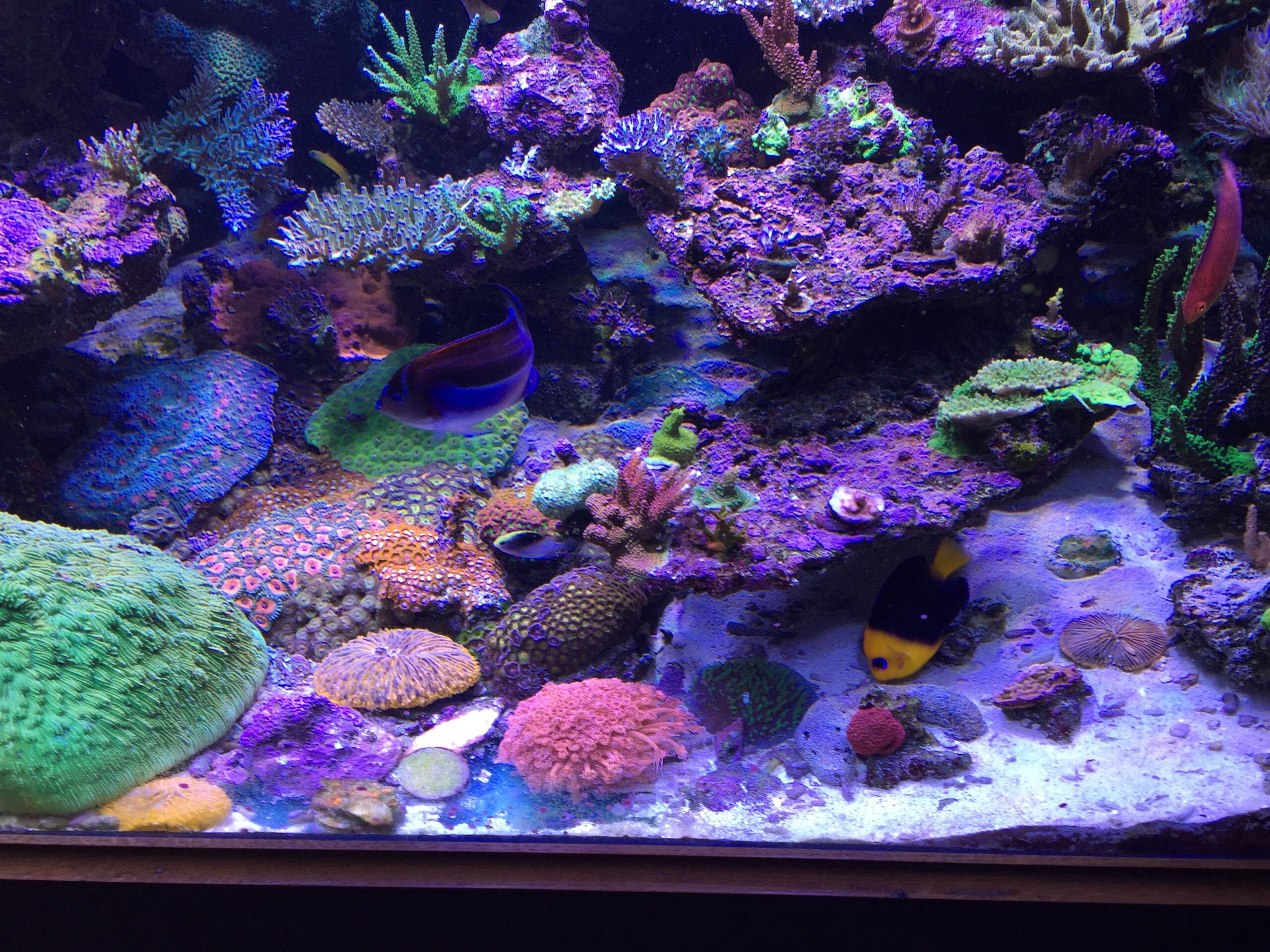
Since high flow is preferred in most tanks housing sps corals where the goal is to maximize growth, also having substrate is problematic. High flow, makes it almost impossible to keep the substrate from blowing around and acting like a sandblaster to the corals and fish in the tank. Sanjay has worked around this by using heavier larger substrate and adjusting the flow so that the majority of it is away from the substrate itself. This is possible in a large tank such as his, but in smaller tanks, it is more of a problem.
Having a bare bottom also has another benefit over having substrate in that detritus and dirt tend to either stay in suspension or settle into spots where they can easily be removed. When substrate is present detritus tends to settle into the substrate over time and this may cause the substrate to act like a nutrient sink, releasing nutrients over time as their levels in the water get low. As a result, at any time substrate may develop a brown or grayish film and when it is stirred it may produce a cloud of dirt.
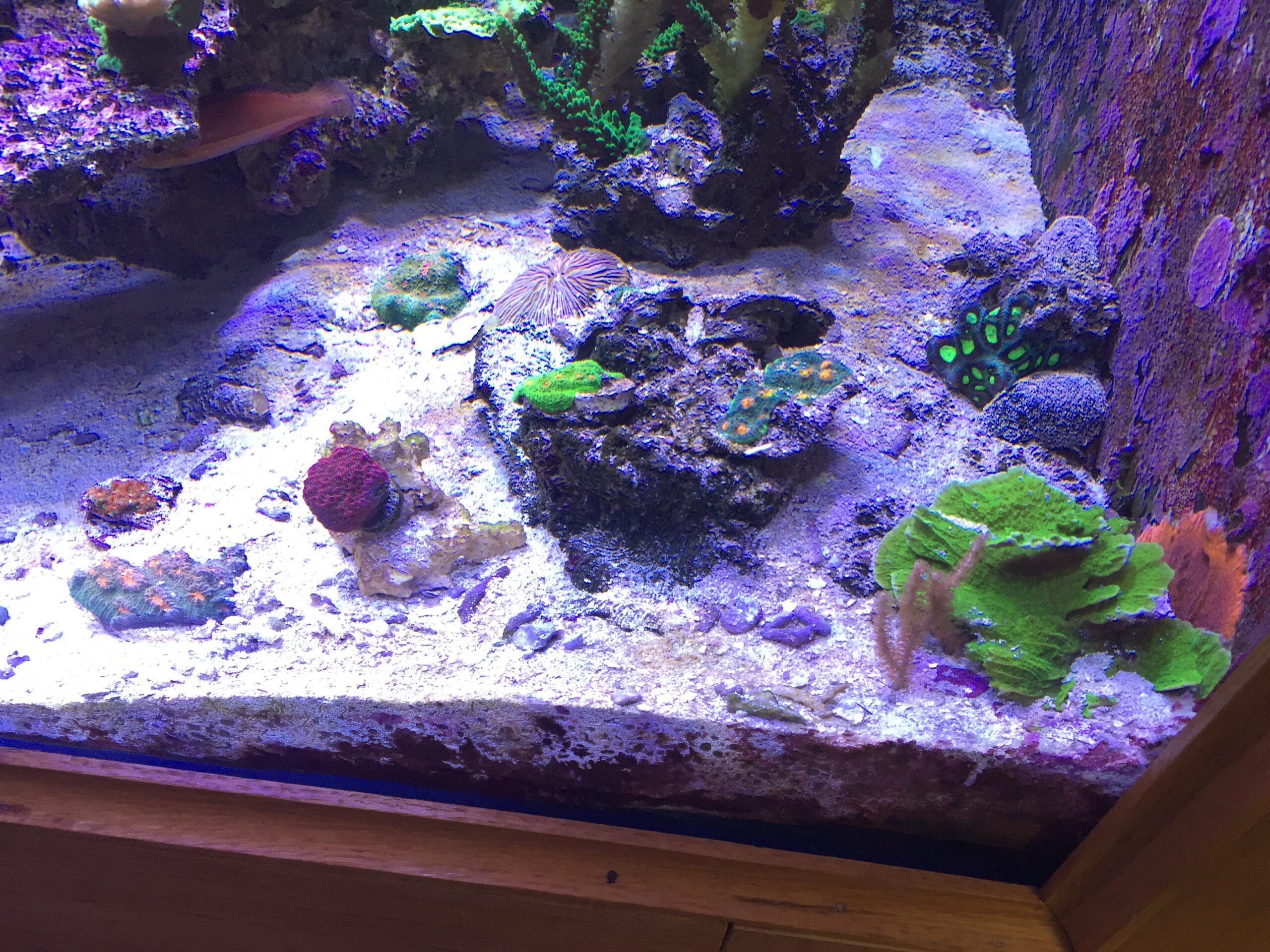
Seeing this cloud or getting a bad smell from a handful of substrate are both indicative of something negative occurring in the substrate. This is why the substrate should be regularly stirred up. This is why over time if detritus is allowed to accumulate the substrate may act as a locus for cyanobacteria, which is another negative for keeping substrate.
As mentioned above, some corals seem to do better when substrate is present, while this may be true, it is also possible to grow some corals on a bare bottom that would otherwise only grow on the live rock. Encrusting corals like Montiporas, Cyphastreas, Favia, Porites, and even star polyps all can be grown on a bare bottom. In addition, coralline algae may also cover the bottom glass over time in a bare bottom tank. While initially, a bare bottom tank may look stark compared with one having substrate, over time if these corals are allowed to grow they can provide colors and contrasts that a plain white substrate can’t.
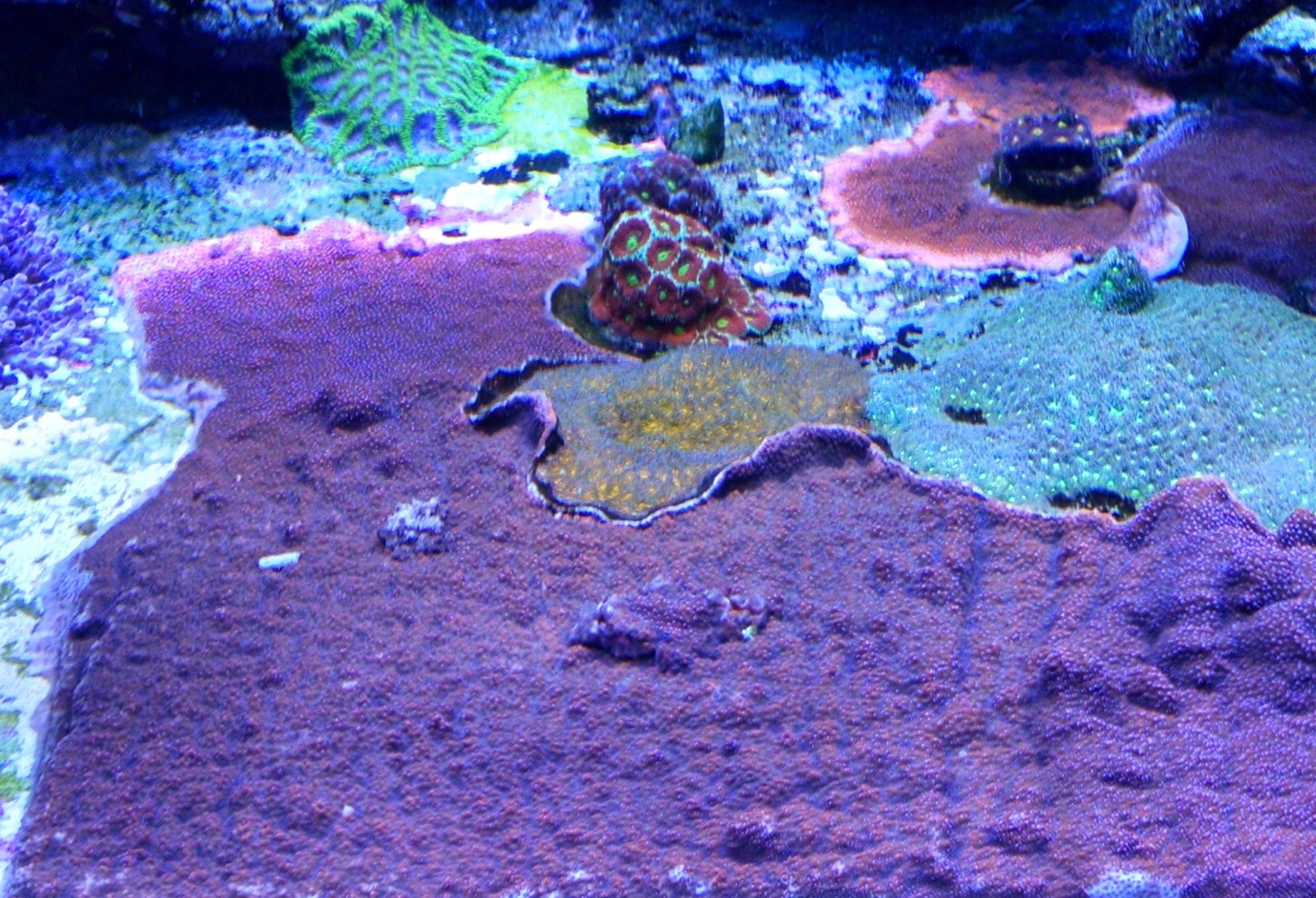
Another positive of a bare-bottom tank that isn’t often considered is that over time corals become overgrown. When this occurs, the rocks may need to be moved so that the overgrown corals can be cut back. When this is done, the substrate is also moved and this can produce major disruptions in the tank owing to how much dirt and detritus is released when the rocks in the substrate are moved. After this kind of disruption it may take months for a tank to settle down and stabilize. This is another advantage of a bare bottom over substrate.
For any given tank there are multiple ways to do things, and whether to have substrate or go bare bottom is just another choice. While aesthetically a bare bottom tank may look better overall, for the most part most observers focus on the corals and the fish rather than the sand. Running substrate in a tank goes back to the early days of the hobby but now it is no longer necessary. As a result, when deciding which way you want to go, there are a number of factors to consider. All of the factors should be considered and whatever will bring you the most enjoyment should be your choice.


